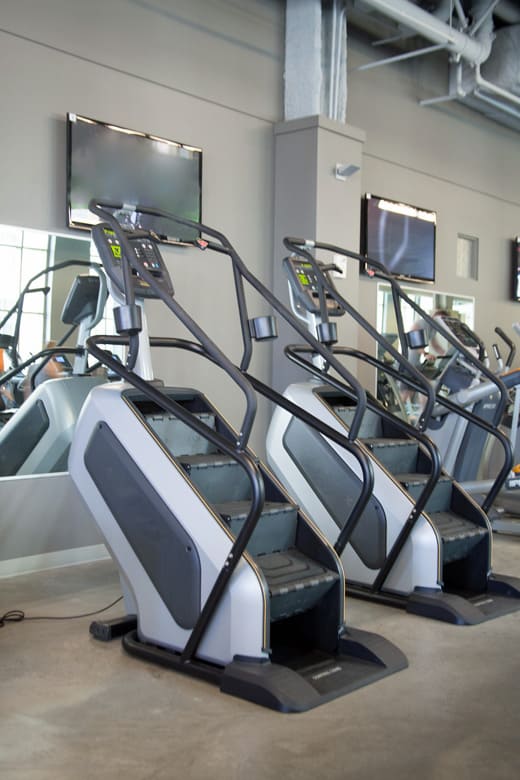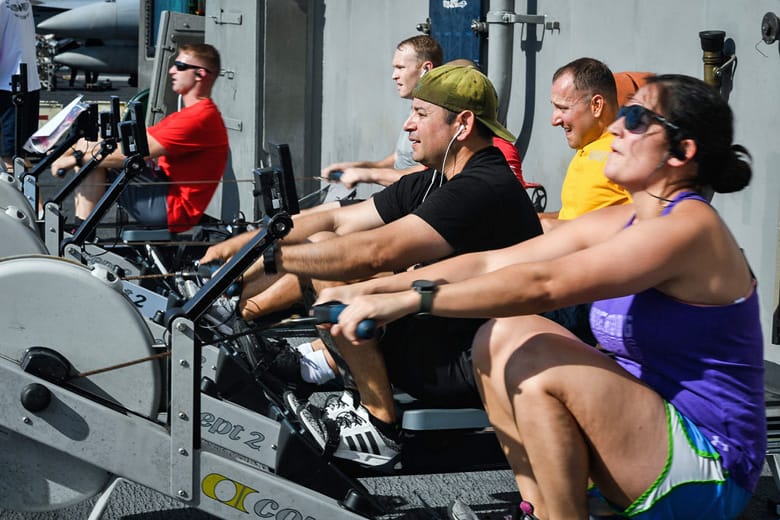Go into any gym and you’ll see lots of cardio machines. In some gyms, cardio machines take up as much as 70-percent of the available floor space. The thing is, almost anyone who exercises knows just how important cardio is for health, fitness and weight control and that is why any self-respecting gym will have plenty of these types of machines on offer. With so many exercise machines to choose from, which one should you use? Which is the best cardio machine for you?
Firstly, you need to consider that the benefits that are derived from exercise are specific to the type of workout you do so if you want to improve your running or cycling performance, then you should focus your efforts on exercising on a treadmill or stationary bike. With specificity addressed, the next things to consider are comfort and enjoyment; if you find using a stair climber very dull, it’s probably not the best exercise for you to do.
Next, consider the quality of the machines on offer. If you have access to a concept 2 erg (erg being another term for a rowing machine and short for ergometer) then you are lucky as these are amongst the best rowing machines in the world. In contrast, some bikes, treadmills and cross trainers are badly designed, poorly built, horrible to use and are best avoided.
Finally, you need to consider equipment availability. If your gym has twenty treadmills and only one cross trainer, you’d be better off focusing your efforts on the treadmill as one is more likely to be available for use when you go to the gym.
With all that in mind, here is my personal review of a variety of cardio machines that are common fixtures in most gyms.
Treadmill

Walking, jogging and running are great forms of exercise but doing these activities on a treadmill is, in my opinion, not optimal. Because the belt is pulled under you by a motor rather than you pulling yourself over the ground, your basic gait mechanics changes. In simple terms, this means that you run, jog or walk differently on a treadmill than you do normally. If you are spending a few minutes warming up before a strength training workout then this difference is inconsequential but if you are exercising for extended periods of time or training to improve running performance, the treadmill doesn’t cut it. As for those handrails that many people insist on hanging on to when going up crazy-steep hills? That completely negates most of the benefits that treadmills have to offer.
Stationary bike

Being low impact, stationary bikes are a good exercise option for those who find jogging and running uncomfortable or painful. Unfortunately, most exercise bikes are not ergonomically designed and actually seem to encourage bad positioning. Overly wide saddles, no adjustment for body length, handlebars too wide or too narrow – stationary bikes are not as adjustable as “real” bikes. On the plus side, you don’t need to worry about other road users or punctures when you are on a stationary bike. Providing you are of an average build that is catered for by the design of the bike you are using, stationary bikes offer a good exercise option. Steer clear of recumbent bikes though – they promote very bad posture.
Cross trainer

Combining an arm and leg action, cross trainers are one of very few total body cardio workouts. With nothing really to adjust, cross trainers are suitable for most exercisers. By going forward or backward and by emphasizing or deemphasizing the arm action, you can add some variety to your workout too. Cross trainers don’t really mirror any real-life activities so while they will improve your fitness, that fitness won’t be especially transferable. If you just want to get fit and burn calories and have no requirement for transferable performance improvements, a cross trainer is a good exercise choice.
Stair climber

Climbing stairs is a good way to exercise your heart, lungs, and legs and unless you have access to long flights of steps, a stair climber machine is a viable alternative. Stair climbers work your legs and butt very effectively – especially if you take large steps. Another low impact exercise, stair climbers are generally okay for heavier exercisers although you need to monitor yourself for knee soreness as the repetitive, load-bearing action of walking up endless stairs may cause problems. To get the most from a stair climber, try and go “hands-free” so to more closely replicate “real” stair climbing.
Upper body bike
The muscles of your upper body are relatively small, especially when compared to your legs. Subsequently, they do not demand much oxygen and using them will not significantly elevate your heart rate and breathing rate. Because of this, upper body bikes don’t really make a whole lot of sense for cardiovascular training although they may be useful for increasing upper body endurance. You’d need to be relatively unfit for arm exercises to elevate your heart rate enough for your heart and lungs to benefit. That being said, if you are unable to do lower body cardio exercises then the upper body bike is a considerable improvement on doing nothing.
Ski machine
Normally designed to replicate cross country skiing, ski machines are a low impact, full-body exercise that will burn a lot of calories and increase your fitness. Not the easiest of machines to use, ski machines are not as common as treadmills and bikes. As cross country skiers are often touted as being the fittest of all the endurance athletes, if you have access to one of these machines, it’s worth using it.
Rowing machine

Saving the best to last, I firmly believe that the indoor rower is one of the best cardio machines around. It involves every major muscle in your body, is low impact, can be made as hard or as easy as required and there is an almost infinite number of different workouts that can be performed. On average, and according to my research, rowing machines burn around 15-percent more calories than most other cardio machines so they are very effective for weight control. Given the choice, I’ll choose a rower ahead of almost every other piece of cardio equipment on most occasions.


